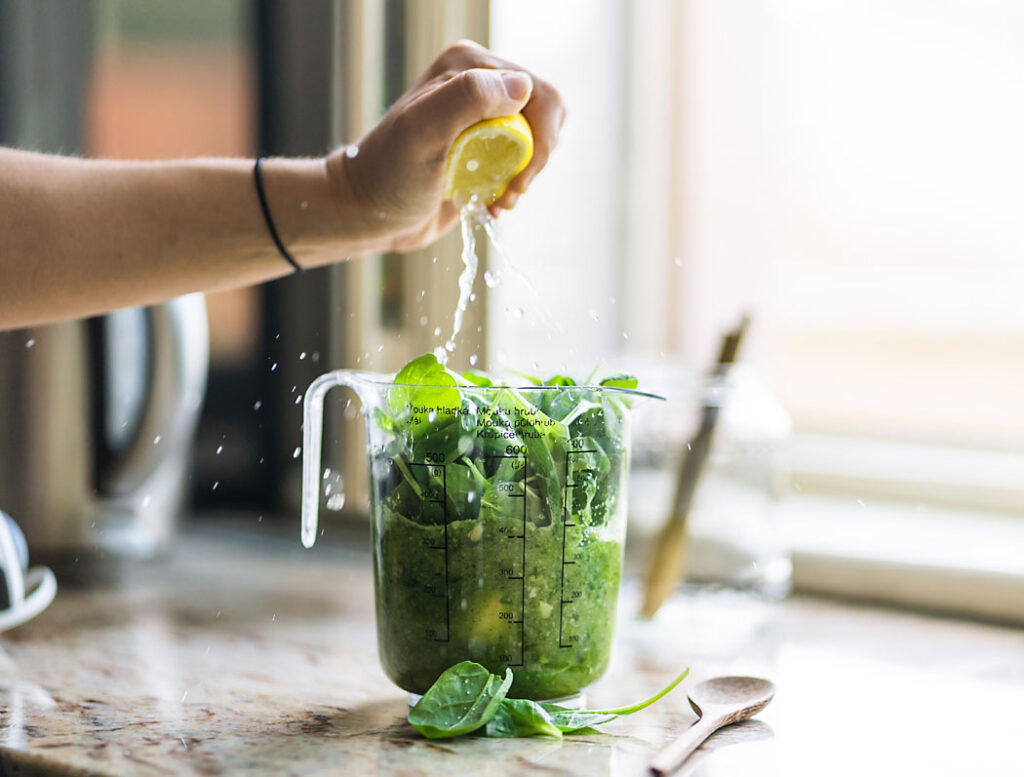
Every time I open YouTube, an ad pops up for an amazing powdered “superfood” green drink that I can purchase for $60 a month. I get a kick out of that! But what’s more amazing is that literally growing beneath our feet are many plants that are already supercharged with health-enhancing ingredients.
So before you spend any money, step outside and allow me to introduce you to an abundance of superfoods that are free, still alive, and likely more potent than their freeze-dried counterparts.
When I lived on the farm, the native superfood plants we call “weeds” would always get a jumpstart on my garden and outperform the seeds I planted. Every garden book will give you strategies for outwitting the weeds. Forget it! Weeds have intelligence that operates effortlessly, their seeds adapting to soil conditions and germinating only at the appropriate time.
Only out of our own ignorance do we call wild plants “weeds.” Every piece of nature, if left to itself, produces a complete complement of food and medicine. We only need to familiarize ourselves with it.
I’ve decided to eat and drink the weeds.
Paul’s Green Drink
In a small bowl, collect dandelion leaves, plantain leaves, white and red clover leaves and blossoms, lamb’s quarters leaves, wild violet leaves, pineapple weed (wild chamomile), purslane leaves, red raspberry leaves, mulberry leaves, chickweed, and cleavers. You only need three to four leaves of each.
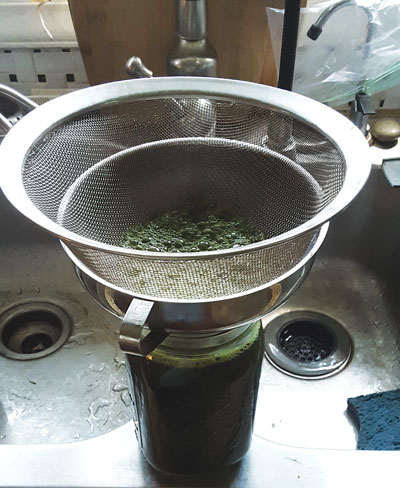
Put them in a blender with a quart of good water (distilled, reverse osmosis, or spring water) and blend for 10 minutes. Then pour through a fine stainless steel strainer or cheesecloth into a quart canning jar. Add the juice of a lemon or lime and drink this throughout the day. Often I put the green remains left in the strainer back into the blender with another quart of water and make a second quart of green drink for later in the day.
When I started making green drinks, I used too many leaves and ended up with a thick, fibrous, bitter slime that I couldn’t drink. The key is to use mostly water and extract the plant juices. Adding the fresh lemon or lime juice makes it very pleasant to drink.
Don’t hesitate to add items from your garden like chard and kale, okra leaves and pods, any culinary herbs, arugula, and sorrel. If you have peppermint, anise hyssop, or fennel leaves, these will transform your green drink into a more enjoyable beverage. When using strong aromatic culinary herbs like oregano, thyme, or rosemary, start out with one leaf, as these herbs can overpower the drink, giving it a medicinal quality.
The idea is to make this into a pleasant ritual, spending that early morning time walking barefoot in the dewy grass as the bird songs awaken nature. It is truly an enlivening way to start the day.
The Benefits of Wild Greens
Greens by nature are bitter, and this quality assists the body in cleansing and reopening the eliminative channels, including the liver, kidneys, skin, lower bowel, and lymphatic system. Current diets are devoid of most bitter foods, so if bitter isn’t a familiar taste for you, then add familiar sweeter greens to your beverage—the underlying taste will still contain the bitter quality. Use small amounts of a wide variety of plants in a very dilute mixture. With continued daily use, you will notice more vibrant skin tone and hair quality, fewer bodily aches, and a more youthful feeling. Your body will thank you for the added nutrition it can’t find in agriculturally procured foods.
The chlorophyll molecule, the source of plants’ green color, and the hemoglobin molecule are nearly identical in structure. The central metal ion in chlorophyll is magnesium, while the central metal ion in hemoglobin is iron. Hemoglobin in mammal blood provides oxygen transport to every cell in the body, while chlorophyll in plants allows sunlight to be converted into carbohydrates by the process of photosynthesis, creating food. So what benefit does chlorophyll provide to the human body?
Studies have shown that chlorophyll promotes the production of both red and white blood cells, absorbs toxins in the lower bowel, and has a normalizing influence on intestinal transit while deodorizing the body. Chlorophyll has a high antioxidant capacity, 1,000 times greater than caffeine, tea, matte, and chocolate, and 20 times that of resveratrol, the antioxident compound found in blackberries, grapes, and wine. Components in chlorophyll are also anti-inflammatory and promote healing: chlorophyll will speed healing when applied directly to wounds. The “green” in a green drink is a builder of blood, opener and cleanser of the eliminative organs, and promoter and protector of vibrant health.
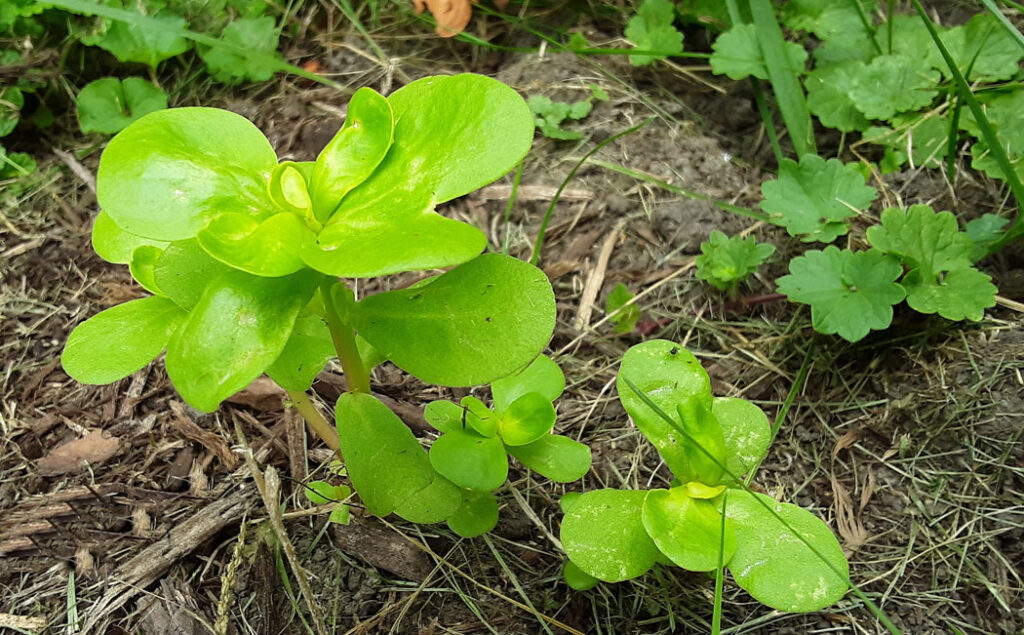
Most wild plants in yards are deep rooted, like white and red clover and alfalfa, whose roots penetrate to 15 feet deep, or they lay prostrate to the ground, like chickweed, purslane, and ground ivy (which you lovingly call “creeping charlie”) and heavily dominate mineral and nutrient uptake. That’s why they’re taking over your lawn—they’re getting all the nutrition! These are the plants adapted to this region. They are opportunistic and get the nutrients and minerals first. They’re the ones God created, and “shall be your food and medicine.” so take advantage of their God-given ability and use them for healing and nutrition.
Let me introduce you to my healing friends in the backyard!
Purslane
Purslane contains the highest amount of omega-3 fatty acids of any known plant. Its thick, fleshy leaves, which can get as large as a quarter, are great in salads or green drinks.
Dandelions
Dandelion leaves, root, and flower stalk are all edible and assist in retoning the liver function. Did you know that all blood in the body passes through the liver every three minutes? Well, dandelion assists the liver by allowing the toxins that have been filtered by the liver to get to the alimentary canal and out of the body. Thank you, dandelion!
Plantain

Plantain also cleanses the blood and can quickly remove poisons like bee and wasp venom from the body. If you get stung, pick a leaf, chew it, and place the wet mass directly on the welt. It will immediately remove the pain and remove the swelling within an hour. During the summer, when lack of rain stalls lawn growth, plantain continues to grow, shooting up tall flower stalks. Psyllium seed husk powder is taken from this flower stalk from another plantain variety. All varieties reduce inflammation and infection in the body, and allow waste to move smoothly along the alimentary canal. It will also clear mucus from the lungs and breathing tubes.
Lamb’s Quarters
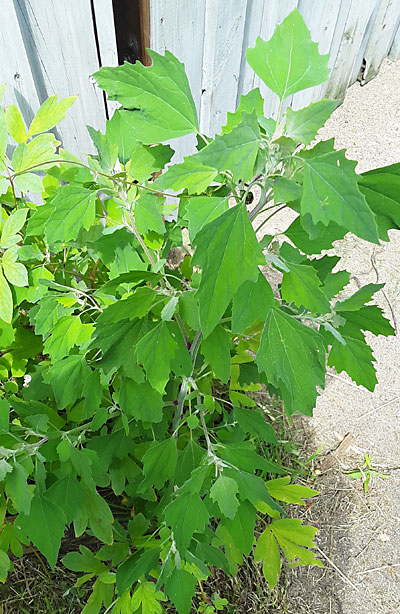
Lamb’s quarters are truly a superfood, with high nutritional value, far exceeding that of spinach and kale, yet are mild flavored and soft textured. Great in salads and your green drink, lamb’s quarters grow quickly and are not at all picky about the the soil. They’re like a very good friend by your side that never complains!
Red and White Clover
Red or white clover looks the same on the green parts. Three days after germinating, the seed can penetrate over 15 feet deep, even into hardpan soils, drawing up minerals and nutrients. Farm animals like milk cows can build a body structure as large as two tons from this plant alone.
Clover is another blood-cleansing plant, used in many herbal formulas to remove cancerous tumors. Mild flavored with very high nutritive value, clover will take over your lawn with wondrous red and white honey-scented flowers.
Wild Lettuce
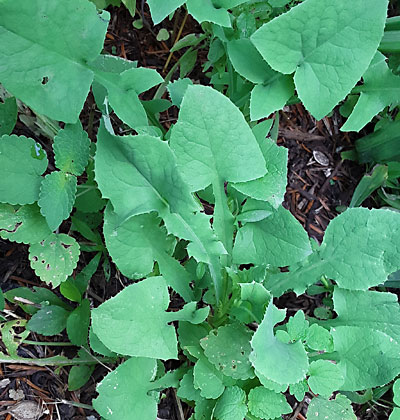
Young wild lettuce is very tender and has milky sap when harvested. A true salad green, wild lettuce has some mild sedative properties due to alkaloids in the milky sap. Many varieties of wild lettuce grow in our area. I currently have one in my yard that is seven feet tall and still hasn’t flowered. I’m hesitating to harvest leaves until I can get seed to save for next year!
Now you’ve met several of my backyard friends. I hope you’ve enjoyed them and will use them in your own nutritious green drink.
If you’d like to learn more about your own backyard friends, pick up a Peterson’s Field Guide: Edible Wild Plants and start snooping around. Here’s to your health!
